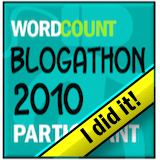 Email communications with clients, prospects, and referral sources are an essential part of your private wealth management or investment business. Handle them well, and you deepen your relationships. In How to Instantly Connect with Anyone, author Leil Lowndes suggests an email closing technique that may boost your effectiveness.
Email communications with clients, prospects, and referral sources are an essential part of your private wealth management or investment business. Handle them well, and you deepen your relationships. In How to Instantly Connect with Anyone, author Leil Lowndes suggests an email closing technique that may boost your effectiveness.Even something as small as your email signature sends a message to your clients, prospects, and referral sources. You set a different tone when you end with "Sincerely, Jane Advisor, CFP, CFA, Senior Vice President" instead of "See you soon, Jane."
Lowndes suggests that you forego traditional closings in favor of ending your email with your recipient's name. For example, "Thanks so much for your help, Samantha" when Samantha is the person you're emailing.
According to Lowndes' approach, you can get away with just your first name or initials--or even nothing at all--after such a line. "Hearing their own name unexpectedly as the last word of your message makes them feel an instant connection with you," she says.
I like Lowndes' idea. But only in moderation. If you close every email like this, the technique will lose its impact.
The rest of the time, you've got an array of more traditional closings to choose from. You need to strike the right balance between formality and warmth. This may mean using different signatures for different clients, depending on your relationship with them. Signatures may also vary by occasion.
Please answer the poll in the right-hand column of this blog about which of the following closings you use most often.
- Best wishes
- Bye
- Cheers
- Have a great day/weekend
- Kind regards
- Sincerely
- Sincerely yours
- Thank you
- Warmly
- Yours truly
- --None of the above
By the way, in these days of blogging transparency, I'm disclosing that I got Lowndes' book for free. I won it in a Twitter contest when I was the first to reply to a tweet by the publisher.
Related posts
- To "Dear" or not to "Dear" in your email
- "You" can help your job hunting thank you
- Six ways to stop sending emails with errors
Receive a free 32-page e-book with client communications tips when you sign up for my free monthly newsletter.
Copyright 2010 by Susan B. Weiner All rights reserved



How about "Hope this helps, thanks!" as part of the standard. Then, add a PS after your name, but before your "credentialling" such as "PS: Don't keep me a secret" (although I use something slightly different).
ReplyDeleteFinally, in terms of the name near the end, I do think that works... and with outlook email it even works for "blast" notes, using the contacts/email mail-merge options... if you don't know how to use those, google for it -- it's awesome.
P.Escobar
Paul,
ReplyDeleteGood to learn that this has worked for you.
Everything that I've read suggests that postscripts, another technique that you suggest, are powerful.
Thanks for commenting!
I've always used Sincerely, but I think that's because of what I know of the word root to mean "pure".
ReplyDeletehttp://podictionary.com/?p=1957
Evacuee,
ReplyDeleteThanks for adding your information about "sincerely." I didn't know that it comes from a root meaning "pure." That has nice connotations.